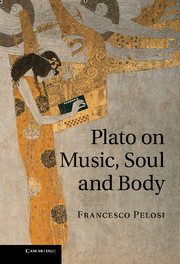2 - Moving to music: a therapy for the rational soul
Published online by Cambridge University Press: 05 November 2014
Summary
We have seen that Plato places great faith in the power of music to shape and condition the psychē in its components that are most connected to sensibility; but he seems to place as much faith in the power of music to intervene on the rational psychē. In this second chapter I will concentrate on one of the two places in which Plato tackles the musical treatment of reason. I refer to Tim. 47c–e, the passage where music first makes its appearance in the Timaeus, a dialogue that dedicates particular attention to musical arguments, as we shall see. I mean to consider the intervention of music on the rational soul from the perspective of the ontological affinity between the two realities, as emerges here and in other parts of the Timaeus. Then I will examine the processes – kinetic, cognitive, emotive and perceptive – on which the re-ordering intervention of music on rationality is based. The second part of the chapter I intend to dedicate, in particular, to the impact of music on the intellective and emotive functions.
THE ALLIANCE OF MUSIC AND SOUL
The first reference to music to be found in the Timaeus appears in a reflection on the profound use of hearing (47c4–e2) and takes up a significant part of it (47c7–e2): we find ourselves unexpectedly facing one of the most interesting and complex observations on music expressed by Plato in the dialogues.
- Type
- Chapter
- Information
- Plato on Music, Soul and Body , pp. 68 - 113Publisher: Cambridge University PressPrint publication year: 2010



